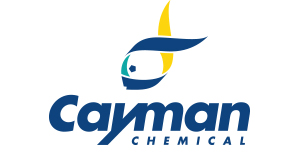Apamin (trifluoroacetate salt), CAS 24345-16-2
Apamin (trifluoroacetate salt), CAS 24345-16-2
SKU
CAY17082
Packaging Unit
500 µg
Manufacturer
Cayman Chemical
Availability:
loading...
Price is loading...
Shelf life (days): 1460.0
Formulation: A solid
Formal Name: L-cysteinyl-L-asparaginyl-L-cysteinyl-L-lysyl-L-alanyl-L-prolyl-L-a-glutamyl-L-threonyl-L-alanyl-L-leucyl-L-cysteinyl-L-alanyl-L-arginyl-L-arginyl-L-cysteinyl-L-glutaminyl-L-glutaminyl-L-histidinamide, cyclic (1?11),(3?15)-bis(disulfide), trifluoroacetate salt
Purity: ≥95%
Formula Markup: C79H131N31O24S4 / XCF3COOH
Formula Weight: 2027.34398
CAS Number: 24345-16-2
Notes: Apamin is an 18-amino acid peptide toxin that has been found in honey bee (A. mellifera) venom.{27794,58879} It is an inhibitor of small conductance calcium-activated potassium (KCa2.2/SK2) channels (IC50s = 0.06-0.4 nM).{27794} It is selective for KCa2.2/SK2 channels over KCa2.1/SK1 and KCa2.3/SK3 channels (IC50s = 1-12 and 1-13 nM, respectively), as well as the intermediate-conductance calcium-activated potassium channel KCa3.1/SK4 at 1 µM but does inhibit voltage-gated potassium channel 1.3 (Kv1.3; IC50 = 13 nM).{27792,27794,58880} Apamin (50 µg/kg) reduces CD8+ cell infiltration into the CNS and the severity of experimental autoimmune encephalomyelitis (EAE), as well as increased peripheral blood levels of CD62L-, CD44L-, and CD44+ memory T cells in mice.{58881} It has commonly been used to determine the role of KCa/SK channels in the brain, vascular endothelium, and bladder.{27791,27789,58882,58879}
Formulation: A solid
Formal Name: L-cysteinyl-L-asparaginyl-L-cysteinyl-L-lysyl-L-alanyl-L-prolyl-L-a-glutamyl-L-threonyl-L-alanyl-L-leucyl-L-cysteinyl-L-alanyl-L-arginyl-L-arginyl-L-cysteinyl-L-glutaminyl-L-glutaminyl-L-histidinamide, cyclic (1?11),(3?15)-bis(disulfide), trifluoroacetate salt
Purity: ≥95%
Formula Markup: C79H131N31O24S4 / XCF3COOH
Formula Weight: 2027.34398
CAS Number: 24345-16-2
Notes: Apamin is an 18-amino acid peptide toxin that has been found in honey bee (A. mellifera) venom.{27794,58879} It is an inhibitor of small conductance calcium-activated potassium (KCa2.2/SK2) channels (IC50s = 0.06-0.4 nM).{27794} It is selective for KCa2.2/SK2 channels over KCa2.1/SK1 and KCa2.3/SK3 channels (IC50s = 1-12 and 1-13 nM, respectively), as well as the intermediate-conductance calcium-activated potassium channel KCa3.1/SK4 at 1 µM but does inhibit voltage-gated potassium channel 1.3 (Kv1.3; IC50 = 13 nM).{27792,27794,58880} Apamin (50 µg/kg) reduces CD8+ cell infiltration into the CNS and the severity of experimental autoimmune encephalomyelitis (EAE), as well as increased peripheral blood levels of CD62L-, CD44L-, and CD44+ memory T cells in mice.{58881} It has commonly been used to determine the role of KCa/SK channels in the brain, vascular endothelium, and bladder.{27791,27789,58882,58879}

 Deutsch
Deutsch










